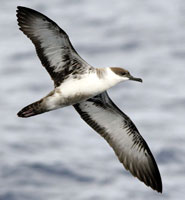Using satellite transmitters to track the movements of Mediterranean shearwaters – a type of sea bird – researchers found that the bird’s foraging range shrinks on days when fishing boats are operating in the area.
Instead of covering hundreds of kilometers looking for food, the birds stay in smaller areas that coincide with the routes of commercial fisheries, reports the study published in Current Biology.
The authors of the study from Spain, UK (Bristol), USA and France suggest that in order to exploit these additional foraging resources, shearwaters dramatically change their foraging patterns by waiting for the discard operations to occur. When the fisheries are closed, such as at weekends and holidays, the shearwater return to searching over a much wider area.
Luca Giuggioli, an author on the paper from the University of Bristol, explained: “When the trawlers are operating the shearwaters tend to spend less time foraging for food, suggesting that they can fulfil their energy requirements much more efficiently and within a shorter time period, compared with when they have to search much further afield.
“Taking advantage of the extra time available because food is more accessible, they presumably return to the colony more often. This might explain the increased breeding and survival performance of these birds, which has risen dramatically over the last decade or so.”
Human impact on the natural environment has many facets – and a change in animal search strategies is one of them. In this instance it has benefited the birds concerned.